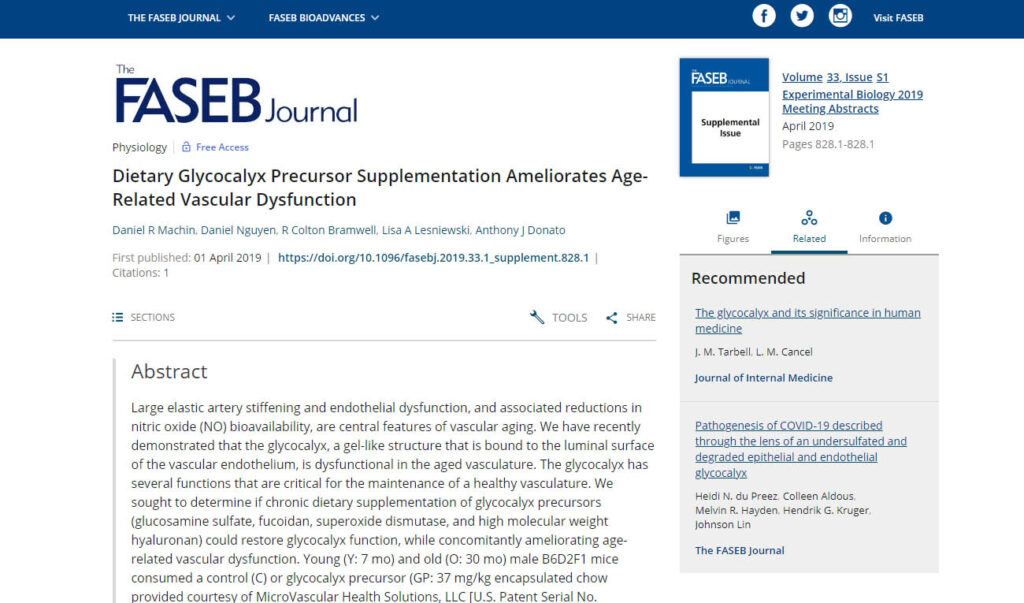Abstract
Large elastic artery stiffening and endothelial dysfunction, and associated reductions in nitric oxide (NO) bioavailability, are central features of vascular aging. We have recently demonstrated that the glycocalyx, a gel-like structure that is bound to the luminal surface of the vascular endothelium, is dysfunctional in the aged vasculature. The glycocalyx has several functions that are critical for the maintenance of a healthy vasculature. We sought to determine if chronic dietary supplementation of glycocalyx precursors (glucosamine sulfate, fucoidan, superoxide dismutase, and high molecular weight hyaluronan) could restore glycocalyx function, while concomitantly ameliorating age-related vascular dysfunction. Young (Y: 7 mo) and old (O: 30 mo) male B6D2F1 mice consumed a control (C) or glycocalyx precursor (GP: 37 mg/kg encapsulated chow provided courtesy of MicroVascular Health Solutions, LLC [U.S. Patent Serial No. 9,943,572]) diet ad libitum for 10 weeks. Glycocalyx barrier function (perfused boundary region [PBR]) was evaluated in the mesenteric microcirculation using an intravital microscope equipped with an automated capture and analysis system. PBR was ~13% higher in OC compared to YC, suggestive of an age-related impairment in glycocalyx barrier function, and this was normalized in OGP mice (Both P<0.05; Figure 1). At baseline, aortic pulse wave velocity (PWV), a measure of large artery stiffness, was higher in OC and OGP compared with YC mice (Both P<0.05; Figure 2). However, after the dietary intervention, PWV decreased by ~13% in OGP (P<0.05), whereas, PWV was unchanged in OC and YC mice after the 10 week period (P>0.05). We assessed endothelial function by endothelium-dependent dilation (EDD, maximal response to acetylcholine [ACh]) in the carotid artery. Carotid artery EDD was higher in YC and OGP compared to OC mice (92.5±2.4 and 90.7±2.3 vs. 69.0±4.9%, respectively, P<0.05). EDD of OGP was similar to YC mice (P>0.05). After incubation with the nitric oxide (NO) synthase inhibitor, L-NAME, the dilatory response did not differ between groups (P>0.05). NO bioavailability (max ACh dilation – max ACh+L-NAME dilation) was ~10–14 fold higher in YC and OGP compared to OC mice (Both P<0.05; Figure 3). Endothelium-independent dilation (vasodilation to sodium nitroprusside) was not different between groups (P>0.05). In young mice, GP diet did not affect any of the aforementioned measurements (P>0.05). In conclusion, 10 weeks of dietary GP supplementation in old mice restores glycocalyx barrier function that is accompanied by reduced aortic stiffness and augmented EDD and NO bioavailability, suggesting that the glycocalyx may be an effective therapeutic target for vascular dysfunction in older adults.


